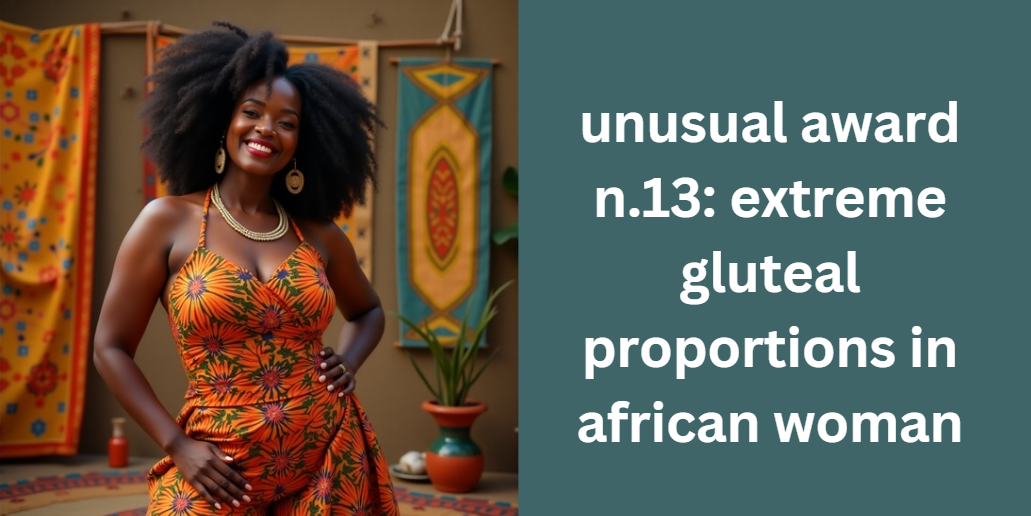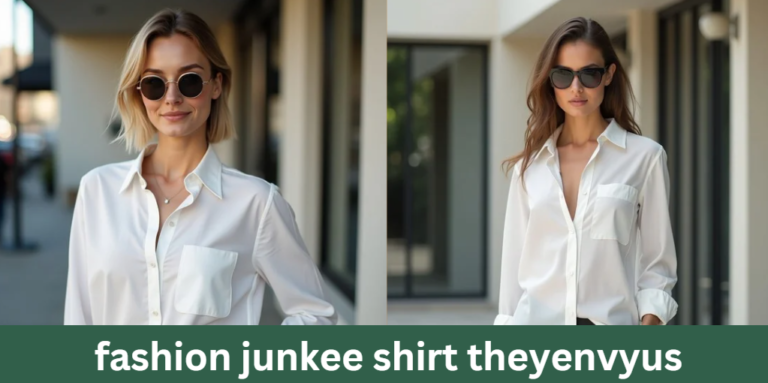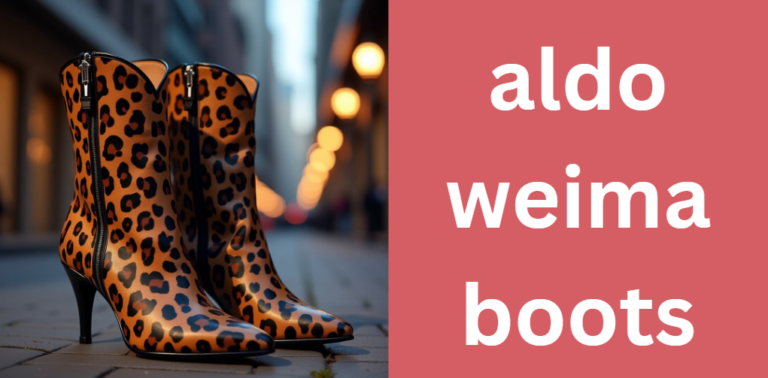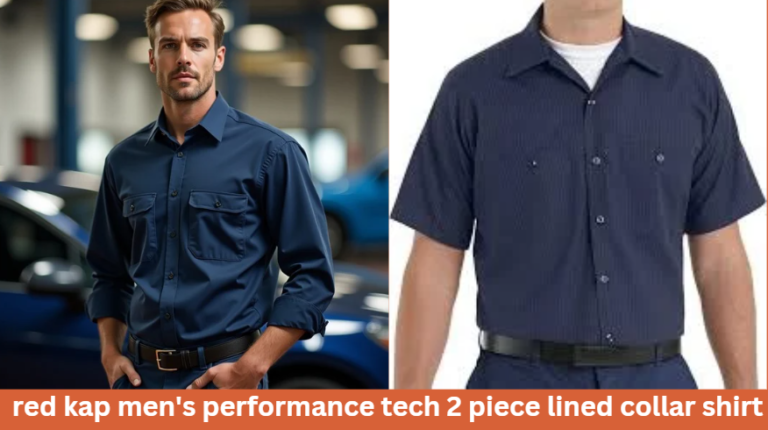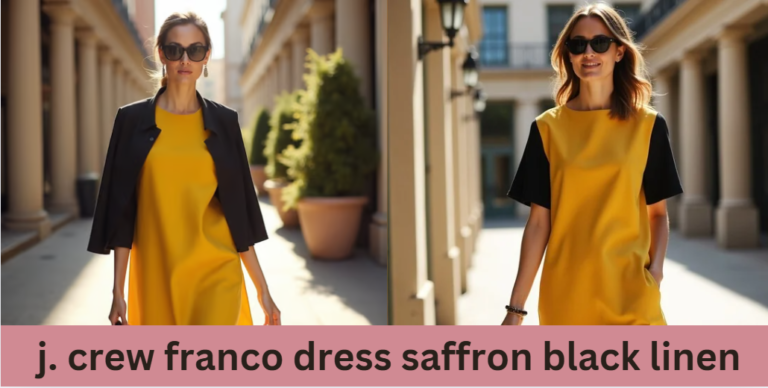Comprehensive Guide to unusual award n.13: extreme gluteal proportions in african woman
The concept of unusual award n.13: extreme gluteal proportions in african woman has recently captured global attention by celebrating a distinctive and naturally occurring physical trait among some African women. Traditionally, many African societies have admired fuller, curvaceous figures as symbols of health, fertility, and strength.
This award not only spotlights a unique aspect of body diversity but also challenges conventional beauty norms, particularly those popularized by Western media. In this guide, we explore the historical context, scientific explanations, cultural significance, and ongoing debates surrounding this phenomenon, inviting readers to gain a deeper understanding of how beauty can be multifaceted and inclusive.
Background and Origins
Historical Context and Creation
The roots of unusual award n.13: extreme gluteal proportions in african woman extend back to longstanding cultural traditions in various African communities. Historically, curvaceous figures have been revered in many parts of Africa, where such traits are seen as markers of fertility, prosperity, and resilience.
The modern iteration of this award emerged as a way to honor these natural features, which had been celebrated locally for generations but had only recently begun to garner global recognition. The award was conceived not merely as a contest but as a cultural statement, aimed at reaffirming the value of body diversity in a world often dominated by narrow beauty standards.
Purpose and Message
At its core, the award intends to celebrate natural beauty and challenge restrictive ideals. It sends a message that attractiveness is not confined to a single image but is instead a reflection of heritage, genetics, and lived experience.
The purpose of unusual award n.13: extreme gluteal proportions in african woman is to create a space where unique body types are recognized and appreciated, thereby fostering a broader dialogue about self-acceptance and inclusivity. In doing so, it contributes to a global movement that questions and expands the traditional definitions of beauty.
Scientific and Genetic Perspectives
The Biology Behind Extreme Gluteal Proportions
Understanding the science behind extreme gluteal proportions involves exploring the interplay between genetics, hormones, and physiology. In many cases, the unique body shape is largely determined by genetic factors that influence how fat is distributed in the body.
Hormonal influences, particularly estrogen, play a significant role in promoting fat deposition around the hips and buttocks. This natural predisposition results in a fuller, more pronounced gluteal region that has been both celebrated and studied by scientists. For those interested in a concise summary of the scientific factors, consider the following table:
| Factor | Description |
|---|---|
| Genetics | Inherited traits that determine natural fat storage patterns and body shape |
| Hormonal Influence | Estrogen encourages fat deposition in the lower body, enhancing curves |
| Physiological Function | Evolutionary benefits such as fertility and energy storage linked to body shape |
Evolutionary and Anthropological Insights
From an evolutionary standpoint, the development of extreme gluteal proportions may have provided advantages in terms of energy storage and reproductive health. Anthropological research suggests that these features could have been naturally selected in environments where food scarcity demanded efficient fat storage.
Over time, such traits not only supported survival but also became culturally embedded as symbols of vitality and abundance. This scientific perspective enriches our understanding of unusual award n.13: extreme gluteal proportions in african woman by framing it as both a biological phenomenon and a culturally significant trait.
Cultural and Social Significance
Traditional Beauty Standards in African Societies
In many African cultures, a curvy figure is far more than an aesthetic ideal—it is a celebrated aspect of identity. Throughout history, fuller, more pronounced gluteal proportions have been associated with positive qualities such as fertility, health, and social status.
In communities where such traits are admired, women have long been regarded with respect and pride. This appreciation is deeply woven into local traditions, art, and even social rituals. The award, therefore, is not an external imposition but a reflection of an age-old cultural narrative that values natural diversity and resilience.
Global Influence and Shifting Perceptions
As the world becomes increasingly interconnected through global media and social platforms, the celebration of diverse body types is gaining traction internationally. Modern influencers, celebrities, and fashion designers are now championing the idea that beauty comes in many forms.
The renewed focus on natural and diverse aesthetics has paved the way for unusual award n.13: extreme gluteal proportions in african woman to be recognized not only within Africa but also on a global scale. This shift is contributing to a broader reassessment of what is considered beautiful, encouraging more inclusive and expansive definitions of attractiveness.
Controversies and Critical Debates
Objectification and Stereotyping
While unusual award n.13: extreme gluteal proportions in african woman aims to celebrate natural diversity, it is not without its critics. Some argue that by focusing on one specific physical trait, the award risks reducing women to their anatomical features and perpetuating objectification.
These critics contend that emphasizing such characteristics may inadvertently reinforce stereotypes, rather than empowering individuals. It is important to acknowledge these concerns and consider the delicate balance between celebrating natural beauty and avoiding the pitfalls of oversimplification.
Ethical and Social Implications
Beyond objectification, there are broader ethical questions about how such awards influence societal standards of beauty. Critics worry that the award might create unrealistic expectations, pressuring young women to conform to a narrowly defined ideal of attractiveness.
Conversely, proponents assert that the award is a step toward recognizing and celebrating the rich tapestry of human diversity. This ongoing debate underscores the complexity of defining beauty in a way that is both inclusive and respectful.
The Role of Diet, Lifestyle, and Environment
Traditional Diets and Daily Practices
The development of extreme gluteal proportions is not solely a matter of genetics; it is also shaped by lifestyle and environmental factors. In many African regions, traditional diets rich in complex carbohydrates, proteins, and healthy fats contribute to maintaining a naturally curvaceous figure.
Moreover, daily physical activities—whether through dancing, farming, or walking—play a crucial role in shaping and toning the body. These cultural practices, passed down through generations, illustrate how diet and activity work in concert with biology to produce the unique traits celebrated by the award.
Environmental and Social Influences
Environmental conditions and social practices further influence body shape. The natural landscape, climate, and communal lifestyle of many African societies create an environment where physical strength and endurance are prized.
These factors, combined with a heritage that values fuller figures, help explain why extreme gluteal proportions are not only common but also celebrated in these regions. The convergence of these elements reinforces the significance of unusual award n.13: extreme gluteal proportions in african woman as a culturally rooted phenomenon.
The Impact on Modern Beauty and Body Positivity Movements
Embracing Natural Diversity
The growing global body positivity movement has brought a renewed focus on embracing natural diversity. In this context, unusual award n.13: extreme gluteal proportions in african woman serves as an inspirational example of how beauty standards can evolve.
Rather than adhering to a one-dimensional ideal, modern society is increasingly recognizing the value of varied and authentic body types. This celebration of natural differences helps empower individuals and promotes self-acceptance.
Future Trends and Industry Influence
Looking ahead, the influence of diverse beauty standards is set to reshape the fashion, cosmetic, and wellness industries. As consumers demand more inclusive representations, companies are adapting their products and marketing strategies accordingly.
The positive impact of such trends is already evident in emerging fashion lines and media campaigns that celebrate real, unaltered beauty. In this way, the ethos behind unusual award n.13: extreme gluteal proportions in african woman is likely to contribute to a broader shift toward more inclusive and realistic portrayals of beauty.
Case Studies and Real-World Examples
Influential Figures and Public Reactions
Several public figures and influencers have embraced their natural curves and become ambassadors for body positivity. Their stories and testimonials illustrate the positive impact of celebrating unique physical traits.
By sharing their experiences, these individuals help challenge conventional beauty standards and offer a more holistic view of attractiveness. Such real-world examples provide tangible evidence of how the principles behind unusual award n.13: extreme gluteal proportions in african woman are resonating with audiences worldwide.
Comparative Analysis with Similar Initiatives
When compared with other unconventional beauty awards, unusual award n.13: extreme gluteal proportions in african woman stands out for its deep cultural roots and scientific relevance. A comparative table may help highlight these distinctions:
| Aspect | unusual award n.13: extreme gluteal proportions in african woman | Other Similar Awards |
|---|---|---|
| Cultural Foundation | Rooted in African traditions and historical practices | Often Western-centric |
| Scientific Backing | Informed by genetic, hormonal, and evolutionary research | Limited scientific focus |
| Social Impact | Promotes body positivity and challenges narrow beauty norms | May reinforce stereotypes |
| Global Influence | Increasingly recognized through social media and inclusive movements | Less diverse representation |
This comparison illustrates how the award differentiates itself through a balanced approach that honors both cultural heritage and scientific insight.
Frequently Asked Questions (FAQ)
Q: How do international perceptions of this award differ from local African views?
While many African communities view naturally curvaceous figures as a traditional symbol of strength and fertility, international audiences often see the award through a modern lens that blends admiration with curiosity. This divergence highlights the varying cultural contexts and the impact of global media on beauty ideals.
Q: What role does social media play in spreading awareness of this award?
Social media platforms have become pivotal in disseminating information about unusual award n.13: extreme gluteal proportions in african woman. They help reshape mainstream narratives by featuring real-life stories, influencer endorsements, and viral discussions that broaden the understanding of diverse beauty standards.
Q: How might this award influence future trends in fashion and cosmetic industries?
The recognition of naturally occurring body diversity through the award is inspiring fashion designers and cosmetic brands to create more inclusive products and marketing campaigns. This shift encourages a broader acceptance of various body types and fosters innovation in design that caters to a more diverse clientele.
Q: What educational opportunities exist to further research this phenomenon?
Academia and research institutions are increasingly exploring topics related to body diversity and cultural aesthetics. Conferences, seminars, and published studies now frequently include discussions on the genetic, evolutionary, and social aspects of traits celebrated by unusual award n.13: extreme gluteal proportions in african woman, paving the way for more informed public discourse.
Q: How does this award contribute to broader conversations about body positivity and mental health?
By highlighting and celebrating a unique physical trait, the award helps challenge rigid beauty norms and encourages self-acceptance. This can positively influence mental health by reducing body image issues and inspiring individuals to embrace their natural features without succumbing to societal pressures.
Conclusion
In summary, unusual award n.13: extreme gluteal proportions in african woman is a multifaceted phenomenon that intersects science, culture, and social discourse. This guide has examined its historical origins, explored the biological and genetic factors behind extreme gluteal features, and discussed its deep cultural significance as well as the controversies it has sparked.
Ultimately, the award serves as a powerful reminder that beauty is diverse and complex, and that embracing natural differences can pave the way toward a more inclusive understanding of attractiveness. By challenging conventional beauty standards and celebrating real, unaltered bodies, we move closer to a world where every individual can feel confident and valued.
Read more
Comprehensive Guide to alfani step n flex – Comfort, Style, and Innovation
Club penguin journey elf on the shelf: The Ultimate Guide
In-Depth Guide to the adventure medical kits rapidpure purifier water bottle 1 unit
Ultimate Guide to 5g network are a game tanytech.com – Transforming Connectivity for the Future
imagesize:2160×3840 game of thrones red woman – A Comprehensive Guide
